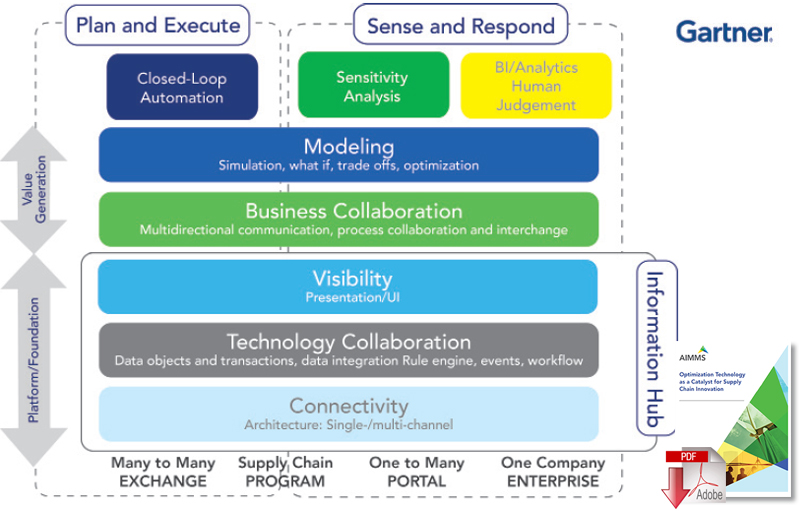In a time when the term ‘disruptive’ is being over-used I find myself increasingly using the term when describing the impact of our product to clients and prospects.
It’s uncomfortable because prior to starting with AIMMS two years ago, I spent 20 years in consulting and IT services and experienced many terms being over-used (such as ‘optimized’ or ‘disruptive’).
I promised myself that I’d endeavor to never use a meaningful term in a superficial way.
So this morning, I woke up early and over breakfast thought I’d challenge myself on the use of the term and explore if I can continue to use it with sincerity…I thought I’d role play a Chief Supply Chain Officer for a large global manufacturer:
First thing. I’m a big fan of Prescriptive Analytics but does this mean I dump Enterprise Resource Planning (ERP)? Absolutely not. I’m totally convinced of the value of ERP and how it helps large organizations automate large volumes of work for back office and generic processes.
What I am going to do, however, is limit ERP exclusively to what it does well: large volume generic transactions. It’s going to allow me to reduce implementation costs by half and double implementation speeds while reducing my risk of failed implementations to near zero.
Second thing. I’m going to build a supply chain analytics center of excellence. I’m going to do that so I can continue to expand my use of the vast sets of data that have come online in my business in the last few years – which I’ve paid to have available but haven’t yet exploited.
Third thing. I’m going to take my long list of projects and initiatives that have an identified business case but are currently bogged down with high forecast implementation costs, and I’m going to prioritize initiatives that result in business action. These are projects that by nature provide processes and technology that furnish business users with a recommended action – it’s Prescriptive Analytics.
I’m going to triage these initiatives so that I’m starting with high benefit opportunities that I can implement quickly while minimizing business risk. I’m going to use a Prescriptive Analytics technology that I can leverage to build my own applications quickly. I will include a constraint that no single initiative can take more than 50 days to build and implement before delivering business value. I’m going to repeat this process many times over.
Is it disruptive? Well let’s see:
- My ERP implementation costs have been reduced by half
- My speed to implement ERP has doubled
- My ERP maintenance costs have halved. I’m becoming able to move to cloud services and generic functionality that removes the upgrade burden
- My competitive differentiation is encapsulated in Prescriptive applications that were each built and value creating in 50 days or less
- My team has the capacity, capability and tooling to pump out additional differentiation every quarter. It is having a material impact on sales and margin
- Business change adoption in operations is almost immediate. My operations team is part of the solution build and they get a solution that they understand, helped create and welcome
Many of our prospects have a hunch that these benefits are available and take the time to explore a Proof of Concept with AIMMS. Many of our clients are already experiencing these benefits.
Yes, I’m going to continue saying that Prescriptive Analytics is going to disrupt supply chains and the nice thing is, I’m not alone. Research institutions like Gartner also recognize Prescriptive Analytics’ potential to improve decision making in the supply chain. If you’re interested in learning more about this type of Advanced Analytics, I highly recommend reading the Gartner Hype Cycle for Chief Supply Chain Officers 2016. You can get a complimentary copy courtesy of AIMMS on this page (available for a limited time).
Optimization Technology as a Catalyst for Supply Chain Innovation
Article topics
Email Sign Up



















